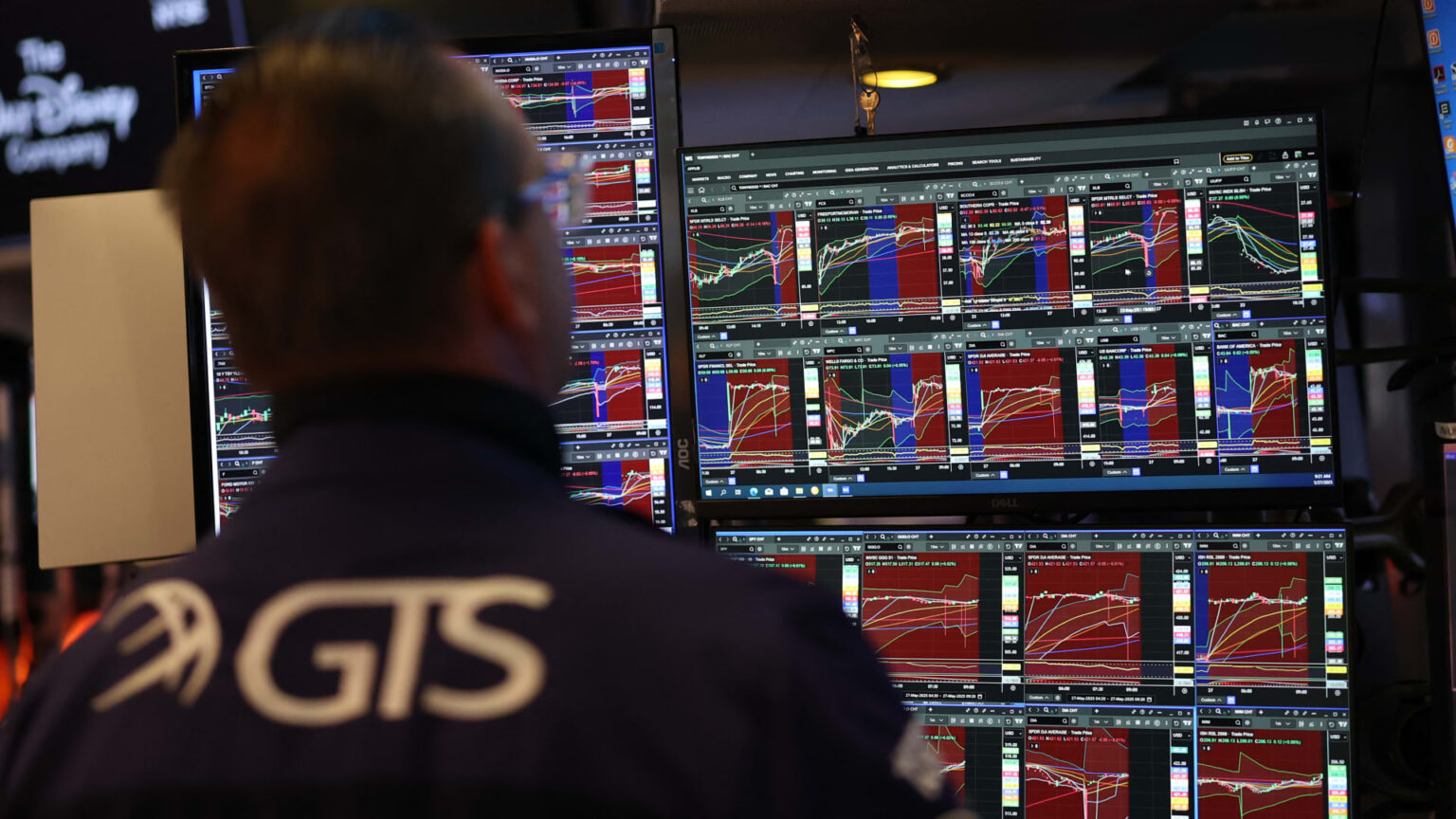Rising Concerns Over U.S. Debt and Market Implications
Market Sentiment and Investor Anxiety
Recent developments have heightened investor apprehension regarding the United States government’s ability to meet its debt obligations. As fears mount over a potential default, market participants are increasingly purchasing insurance against such an event, reflecting growing unease about fiscal stability.
Data from the London Stock Exchange Group (LSEG) indicates a steady climb in the cost of insuring U.S. government debt, with the current premiums nearing their highest levels in two years. This trend underscores a shift in market sentiment, signaling increased concern among investors about the country’s fiscal outlook.
Understanding Credit Default Swaps and Market Indicators
Credit Default Swaps (CDS) serve as financial instruments that act as insurance policies for investors holding debt securities. When investors buy CDS, they pay a regular fee to protect themselves against the risk of default by the issuer-in this case, the U.S. government. An uptick in CDS premiums suggests that investors perceive a higher risk of default or financial instability.
As of mid-2025, the spreads on one-year CDS contracts for U.S. debt have risen from approximately 16 basis points at the start of the year to over 52 basis points. Similarly, five- to twelve-month CDS spreads have nearly doubled, indicating increased market concern. These spreads represent the additional cost investors are willing to pay for protection, with wider spreads implying greater perceived risk.
Market Interpretation and Broader Political Context
Experts clarify that the recent surge in CDS premiums primarily reflects political uncertainty rather than imminent insolvency. Rong Ren Goh, a portfolio manager at Eastspring Investments, emphasizes that these movements are more about hedging against political risks-such as disagreements over the debt ceiling-rather than signs of an impending default.
Indeed, the current spike aligns with ongoing debates in Washington over raising the debt ceiling, which has become a focal point of concern. The debt ceiling, set at $36.1 trillion, was reached earlier this year, limiting the Treasury’s ability to borrow further except to service existing debt. Treasury officials are closely monitoring tax receipts and economic indicators to determine the precise timing of the so-called “X-date,” when borrowing capacity could be exhausted.
Historical Perspective and Recent Developments
Historical data from Morningstar reveals that spikes in CDS spreads often coincide with periods of heightened political tension surrounding the debt ceiling, notably in 2011, 2013, and more recently in 2023. These episodes typically trigger market volatility but are usually resolved through last-minute legislative action.
In May 2025, the U.S. House of Representatives approved a significant tax relief package that could potentially increase the debt ceiling by $4 trillion, pending Senate approval. Meanwhile, Treasury Secretary Scott Bessent has urged congressional leaders to act swiftly, aiming to raise the limit before the August recess to prevent a technical default.
Despite these efforts, uncertainty remains, with officials warning that the exact timing of reaching the debt limit is still unclear. Past crises have seen Congress intervene at the last moment, averting default through temporary measures or short-term extensions.
Implications for the Economy and Financial Markets
Many analysts view the recent rise in CDS costs as a temporary reaction to political uncertainty rather than an indicator of an imminent economic crisis. Historically, during the 2008 financial meltdown, CDS linked to mortgage-backed securities experienced extreme volatility due to widespread defaults on subprime loans. However, sovereign CDS-those tied to government debt-tend to behave differently, reflecting broader economic confidence rather than immediate default risk.
Spencer Hakimian, founder of Tolou Capital Management, notes that the current market perception is that CDS are often used as speculative tools rather than genuine indicators of default risk. Ed Yardeni, a renowned economist, emphasizes that the U.S. government has historically prioritized debt repayment, making a default highly unlikely.
In fact, Moody’s recently downgraded the U.S. credit rating from Aaa to Aa1, citing concerns over fiscal health, but this change does not necessarily imply an imminent default. Instead, it highlights ongoing fiscal challenges that policymakers need to address.
Looking Ahead: Risks and Opportunities
If Congress manages to pass the necessary legislation in time, the temporary increase in the debt ceiling will likely ease market tensions. However, the ongoing debate underscores the importance of long-term fiscal reforms to stabilize the nation’s finances and prevent future crises.
Market watchers warn that prolonged political gridlock could keep investor confidence fragile, potentially leading to increased borrowing costs and volatility. As the debate continues, investors are advised to monitor fiscal policy developments closely and consider the broader economic implications of these political battles.
Ultimately, while current market signals suggest heightened concern, most experts agree that the U.S. government remains committed to honoring its debt obligations, and a default remains an unlikely scenario-though vigilance is essential in these uncertain times.

